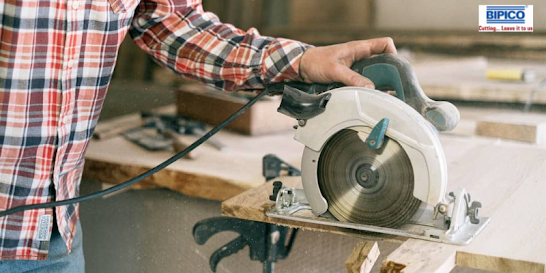Different Saws' Names and Applications
From the most basic type of cutting instrument to highly developed motorized machinery, all can be classified as a saw. The kind of saw you have or would like to have can vary greatly depending on your occupation or your interests.
Anyone working in the construction sector is likely to require a wide selection of saws, including ones that can handle several situations in addition to those that are made to complete a particular task. With some overlap, carpenters or anyone with a home woodworking shop will require a completely different set of saws.
There are various sorts of saws that might be useful for homeowners who want to make their shelves, create a garden fence, or prune their tall trees and plants. It can be difficult to decide which saw you need, so we have outlined the basic categories of saws, their functions, and the applications in which they operate best as follows:
#1 Hand Saws
These saws have the advantages of being more affordable than power saws, being easily transportable, and taking up very little storage space. But because they frequently take longer to complete work than powered versions, they could be best suited for minor jobs.
#2 Power Saws
These could be portable or fixed-position tools. They enable us to perform cutting tasks considerably more swiftly than hand saw equivalents and are fantastic for efficiency and precision.
These have the problem of being fairly expensive, but if you purchase a dependable one, it should last you for many years of cutting.
While some of these power saws are easy to operate, others may be complicated and dangerous, necessitating further training before using power saws.
#3 Band Saws
Carpenters who are concerned about safety have started using stationary band saws because there is no kickback risk when using a table saw.
To make cuts, band saws use a continuous band of blades that spins around two or three wheels. The blades' tiny teeth enable them to be used on a variety of materials.
This is a tool for a workshop rather than one that can be driven about because the blades are part of a large, heavy table. Although it can cut plastic, wood, and pipes, it can only go a few inches deep.
#4 Table Saws
In table saws, the material to be cut is sliced using circular spinning blades that protrude upward from a table. Similar to how a circular saw operates, where you pull the saw blade onto your material, these virtually operate in a reverse manner. Instead, you press your material onto the blade while using a table saw.
You may alter the blade depth to meet your demands for cutting, and you can change the blade itself to masonry or metal blades to cut a variety of materials. Although these kinds of saws are excellent for creating precise straight cuts, they should only be used after receiving proper instruction.
#5 Reciprocating Saws
On a job site, these compact saws provide exceptional versatility. They have a lot of power and can be utilized on a range of projects because of their size and portability. They operate by moving a small blade back and forth to cut through wood or metal. Depending on the power source, they may be corded or wireless.
#6 Pole Saws
Chainsaws are mounted to the opposite end of a telescoping pole in a pole saw. These saws are intended to be used without a ladder to prune and trim tall trees and hedges. Pole saws come in a variety of power configurations, including cordless, corded, electric, and gas-powered.
Summary
The majority of saws are strong and reliable. Because saws are such strong tools, you should always wear safety gear when using them.
This post will introduce you to six different saw types and their applications. As you can see, each type of saw has several purposes. Consider carefully which kind of saw to use for every woodworking job.
Knowing the various saw types and their uses will make choosing the proper one simple.






Comments
Post a Comment